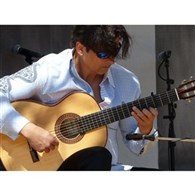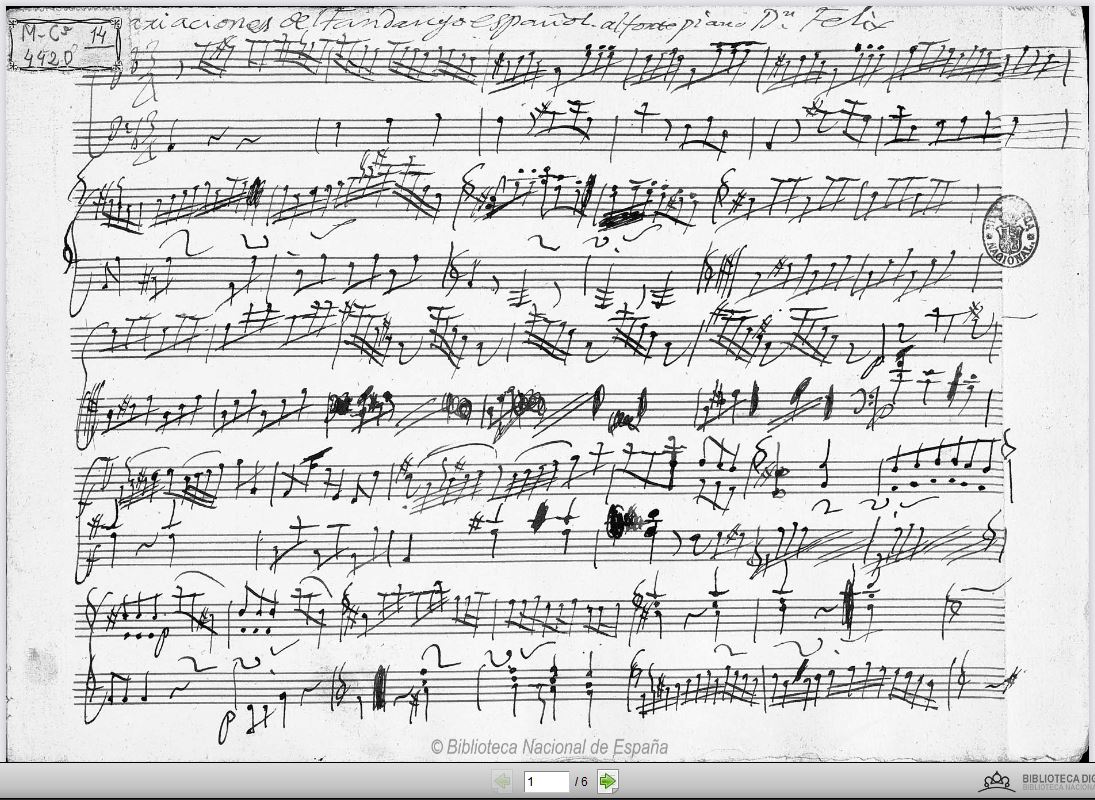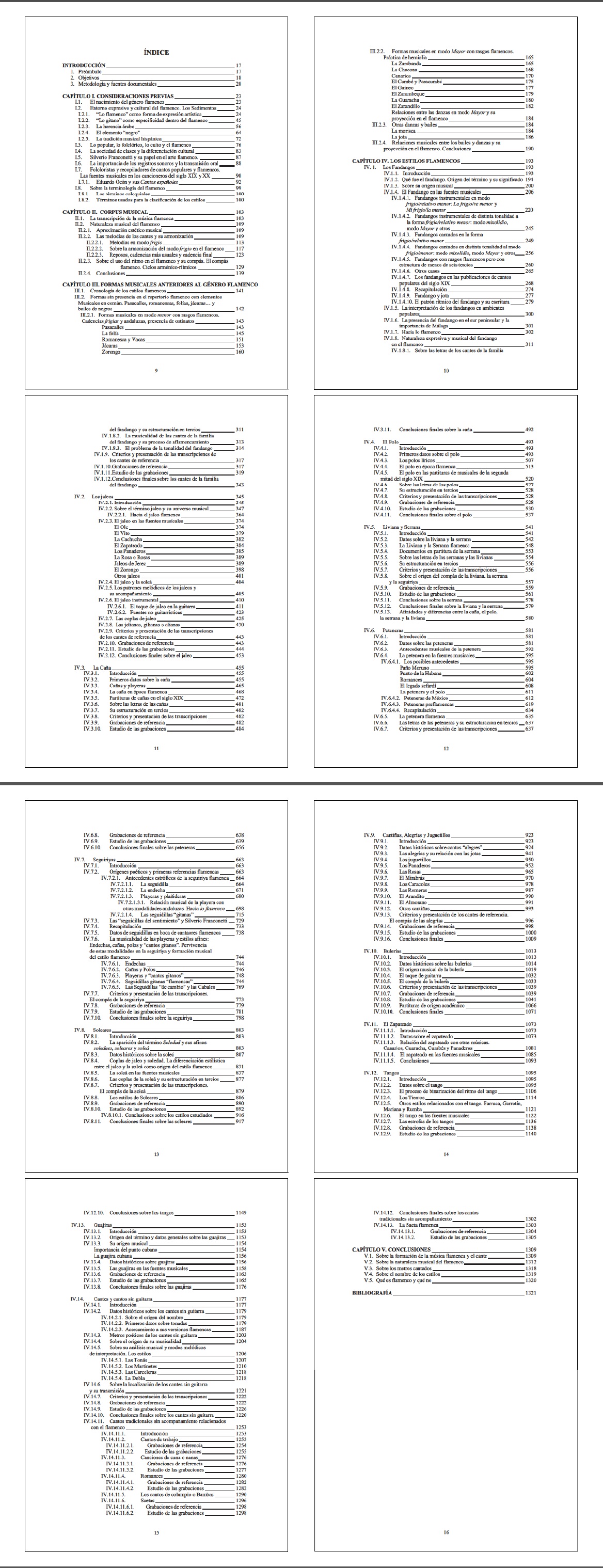Welcome to one of the most active flamenco sites on the Internet. Guests can read most posts but if you want to participate click here to register.
This site is dedicated to the memory of Paco de Lucía, Ron Mitchell, Guy Williams, Linda Elvira, Philip John Lee, Craig Eros, Ben Woods, David Serva and Tom Blackshear who went ahead of us.
We receive 12,200 visitors a month from 200 countries and 1.7 million page impressions a year. To advertise on this site please contact us.
|

|
|
Western art music is to Scale/mode as Flamenco, Arab, Hindustan are to...?
|
You are logged in as Guest
|
|
Users viewing this topic: none
|
|
Login  | |
|

  
Beni2
Posts: 139
Joined: Apr. 23 2018

|
 Western art music is to Scale/mode a... Western art music is to Scale/mode a...
|
|
|
I've been watching discussions of scale and mode on several channels and find them problematic. This also relates to the discussion flamenco key and the concepts of modality and tonality.
A scale is an ABSTRACT collection of notes usually represented in ascending order, hence "scale" from the Latin for steps or ladder.
A mode, also from the Latin, is a manner, a way, a mode of doing something... in this case, arranging melodious from the notes of the scale. Modality is the name given to the general practice.
In early Western music there were eight modes. 4 authentic modes were Dorian, phrygian, Lydia and mixolydian. Add the "hypo" prefix to each and you have the plagal modes.
To elaborate on "mode," YouTube "jazzers" will sometimes explain the concept as a subscale of a parent scale. So D Dorian would be the second mode of its parent C ionian scale.
Dorian and hypodorian share the same notes and finalis, "D." They DO NOT share reciting tone and hypodorian can include notes up to a fourth below the final.
|
|
|
|
REPORT THIS POST AS INAPPROPRIATE |
Date Jan. 26 2021 1:29:31
 |
|

   
BarkellWH
Posts: 3458
Joined: Jul. 12 2009
From: Washington, DC

|
 RE: Western art music is to Scale/mo... (in reply to Beni2) RE: Western art music is to Scale/mo... (in reply to Beni2)
|
|
|
quote:
To date there are several books that argue for or at least acknowledge the possible connection of Arabic to flamenco music.
Do we really need books "arguing" for a "possible" connection between Arabic [music] and flamenco? I think most people who have a reasonable background in flamenco and history acknowledge the Arabic connection via the Moors who invaded and conquered Spain in 711 AD. The Arabs had conquered all of North Africa by the late 7th century and brought with them their language and music. The Moors carried the language and music with them to Spain.
I have yet to see any evidence that denies the influence on flamenco of the Roma (now Gitano), Moors, and Sephardic Jews. It may be an open question just when flamenco became recognizable as "flamenco," but I don't think there is any question about the influence Arabic, via the Moors, has had on flamenco.
Bill
_____________________________
And the end of the fight is a tombstone white,
With the name of the late deceased,
And the epitaph drear, "A fool lies here,
Who tried to hustle the East."
--Rudyard Kipling
|
|
|
|
REPORT THIS POST AS INAPPROPRIATE |
Date Jan. 26 2021 14:14:20
 |
|

  
Beni2
Posts: 139
Joined: Apr. 23 2018

|
 RE: Western art music is to Scale/mo... (in reply to Beni2) RE: Western art music is to Scale/mo... (in reply to Beni2)
|
|
|
This was really directed a JoeVidetto as I noted in the post above. He was asking about how to communicate with other musicians.
My point is that NO ONE HAS PRODUCED A DEFINITIVE THEORY THAT EXPLAINS FLAMENCO IN A PRACTICAL WAY.
Here are some of the problems I wanted to highlight that have to do with translation.
Rough translations for scale and mode on Western art music in Arabic music are ajna (pl. Jins) and maqam. In Hindustani music thaat and raga. Jins ("genus" from the Greek) does not really translate and is used as a placeholder for trichord, tetrachord, or pentachord. Jins get combined to make maqam but a maqam has conventional turns and gestures and is close to "mode."
Hindustani thaats (I believe there are 10 in Bhatukandes classification) are more like scales. They are abstract collections of pitches. Raga are conventional turns and gestures and so raga is more like mode. In fact, from the ten thaat derive something like 32 raga. Thaat are heptatonic (seven notes) and many more or less map onto western "scales." However, derived raga use alterations, sometimes microtonal, and sometimes these are determined by direction.
THEREFORE, when using the foreign concepts to describe our explain flamenco, it would be less egregious to use "jin hijaz" or "thaat bhairav" when discussing pitch content, a user similar to "scale."
Although Ricardo pointed out that it's kind of nitpicking from a layperson's perspective (and I agree), these concepts have real meaning in their cultural contexts. For example, when two "classical" musicians talk about church modes, they will have common ground conceptually. One might ask, "Boethius or Glarean" but they both get it. Likewise, jazzers might recognize double harmonic major while a historical or ethno- musicology might recognize the double harmonic major as a double phrygian dominant, "oriental," or bhairav thaat.
As for connections of any of these conceptual and theoretical fairings with flamenco, I would (and do) argue that 1) Western theory gives 99% of the conceptual tools w would need for a good explanatory theory, and 2) there is a long history of guitar accompanied song and dance in Spain from which flamenco inherited some of its structural and musical components. They are, of course, arranged differently and have evolved but they are there.
|
|
|
|
REPORT THIS POST AS INAPPROPRIATE |
Date Jan. 26 2021 16:54:54
 |
|

  
Beni2
Posts: 139
Joined: Apr. 23 2018

|
 RE: Western art music is to Scale/mo... (in reply to Beni2) RE: Western art music is to Scale/mo... (in reply to Beni2)
|
|
|
quote:
I have yet to see any evidence that denies the influence on flamenco of the Roma (now Gitano), Moors, and Sephardic Jews. It may be an open question just when flamenco became recognizable as "flamenco," but I don't think there is any question about the influence Arabic, via the Moors, has had on flamenco.
Hi Bill. That's argumentem ad popular but I happen to agree. I attempt some speculative explanation regarding Arabic and Sephardic influences in my dissertation using anecdotal and historical evidence from interesting sources, some going back in history, some flamenco. Flamenco studies in the past tended to go all or nothing on the gitano influence. Even those that have looked to other sources don't provide direct empirical evidence.
A scale or mode should not be thought of as historically or casually linked unless it can be shown to be. Roldan's book is ok as far as demonstrating historical contact but I want to see evidence: was the voice used in the same way, was the poetry similar in form and/or content, were the rhythms similar, etc.? Give us concrete evidence.
@Ricardo
You should read Castro Buendia's work on the soleá and seguiriya (siguiriya, seguidilla, 😆). There are connections of other genres to the soleá... it's not "la mare de to'o loh cante" in a biological metaphor sense, more like in an adopted sense.
|
|
|
|
REPORT THIS POST AS INAPPROPRIATE |
Date Jan. 26 2021 17:09:14
 |
|

   
BarkellWH
Posts: 3458
Joined: Jul. 12 2009
From: Washington, DC

|
 RE: Western art music is to Scale/mo... (in reply to Beni2) RE: Western art music is to Scale/mo... (in reply to Beni2)
|
|
|
quote:
Yes, but who influenced what?
In the topic I addressed, it was the Arabs, via the Moors, as well as the Gitanos and Sephardic Jews, that influenced flamenco. Of course there have been other influences such Latin American "Ida y Vuelta" that the Spaniards brought back with them.
Bill
_____________________________
And the end of the fight is a tombstone white,
With the name of the late deceased,
And the epitaph drear, "A fool lies here,
Who tried to hustle the East."
--Rudyard Kipling
|
|
|
|
REPORT THIS POST AS INAPPROPRIATE |
Date Jan. 26 2021 22:06:29
 |
|

   
Ricardo
Posts: 14801
Joined: Dec. 14 2004
From: Washington DC

|
 RE: Western art music is to Scale/mo... (in reply to BarkellWH) RE: Western art music is to Scale/mo... (in reply to BarkellWH)
|
|
|
quote:
ORIGINAL: BarkellWH
quote:
Yes, but who influenced what?
In the topic I addressed, it was the Arabs, via the Moors, as well as the Gitanos and Sephardic Jews, that influenced flamenco. Of course there have been other influences such Latin American "Ida y Vuelta" that the Spaniards brought back with them.
Bill
Problem is Bill, musical analytical minded folk (like me) see gaping gigantic holes in those types of generalizations. Concrete examples are needed or it holds no water, and while it doesn’t harm the present ability to practice the art, it can feed these misconceptions people always enter the learning process with. Example above...I went reading the guy Romerito mentioned a few hours ago...I waded through musical score examples of BS caña, Scarlatti and Soler fandango, aguado,...none of which, despite the claims, have anything more than superficial elements of the flamenco it claims to be an influence on or derived from. As evidence it is either missing something to make a PROPER connection, or, it needs to be DISCARDED as evidence of anything important. The Maximo Lopez Fandango was on a different level of appropriate evidence...and it was mentioned IN PASSING! Ridiculous to me. That’s how I see it. What music did the moors perform....anything like the makkams? It COULD be 100% true, but where is the damn score? This IS music we are talking about. And I don’t need scores only, but the first wax cylinders don’t show the Moorish connection directly. So the only music evidence has to be in some written form before that time. Vague anecdotes (a camel decided music will continue in these lands LOL) or the freaking TITLE OF A SONG???? Worst of all, a freaking CONCERT REVIEW!! That kind of junk is all worthless really.
_____________________________
CD's and transcriptions available here:
www.ricardomarlow.com
|
|
|
|
REPORT THIS POST AS INAPPROPRIATE |
Date Jan. 27 2021 0:08:32
 |
|

  
Beni2
Posts: 139
Joined: Apr. 23 2018

|
 RE: Western art music is to Scale/mo... (in reply to Ricardo) RE: Western art music is to Scale/mo... (in reply to Ricardo)
|
|
|
quote:
Example above...I went reading the guy Romerito mentioned a few hours ago...I waded through musical score examples of BS caña, Scarlatti and Soler fandango, aguado,...none of which, despite the claims, have anything more than superficial elements of the flamenco it claims to be an influence on or derived from
Which article did you read? He includes many musical examples.
@Bill
I agree. Anyone who comes to flamenco tries to absorb knowledge in whatever form they can, if they're serous. That still does not tell us anything about who influenced or contributed what.
@Ricardo
quote:
The Maximo Lopez Fandango was on a different level of appropriate evidence...and it was mentioned IN PASSING! Ridiculous to me.
This is why seemingly unimportant connections actually ARE important. All the anecdotes, all the concert reviews, etc. don't mean anything individually but sometimes they provide one more piece toward the solution of a particular puzzle, musical, historical, or otherwise.
|
|
|
|
REPORT THIS POST AS INAPPROPRIATE |
Date Jan. 27 2021 2:18:34
 |
|
 New Messages New Messages |
 No New Messages No New Messages |
 Hot Topic w/ New Messages Hot Topic w/ New Messages |
 Hot Topic w/o New Messages Hot Topic w/o New Messages |
 Locked w/ New Messages Locked w/ New Messages |
 Locked w/o New Messages Locked w/o New Messages |
|
 Post New Thread
Post New Thread
 Reply to Message
Reply to Message
 Post New Poll
Post New Poll
 Submit Vote
Submit Vote
 Delete My Own Post
Delete My Own Post
 Delete My Own Thread
Delete My Own Thread
 Rate Posts
Rate Posts
|
|
|
Forum Software powered by ASP Playground Advanced Edition 2.0.5
Copyright © 2000 - 2003 ASPPlayground.NET |
0.09375 secs.
|


 Printable Version
Printable Version











 New Messages
New Messages No New Messages
No New Messages Hot Topic w/ New Messages
Hot Topic w/ New Messages Hot Topic w/o New Messages
Hot Topic w/o New Messages Locked w/ New Messages
Locked w/ New Messages Locked w/o New Messages
Locked w/o New Messages Post New Thread
Post New Thread